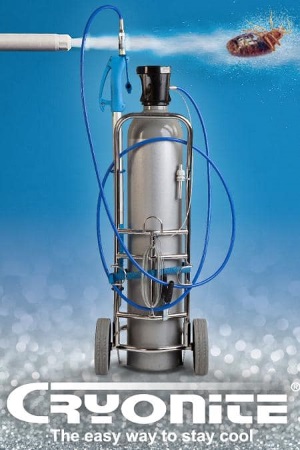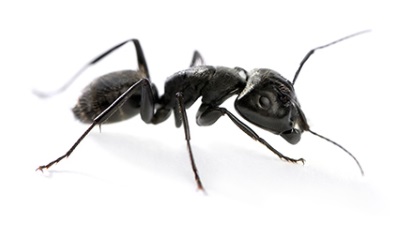Some Known Questions About Pest Control Chicago.
Some Known Questions About Pest Control Chicago.
Blog Article
Pest Control Chicago for Dummies
Table of ContentsExamine This Report about Pest Control ChicagoThe Basic Principles Of Pest Control Chicago The Ultimate Guide To Pest Control ChicagoPest Control Chicago - TruthsThe Of Pest Control ChicagoThe Definitive Guide for Pest Control Chicago
Growing or gathering a crop prior to (or after) a pest is existing lowers insect damage by avoidance. Capturing and calculating a bug's growing level days can assist with intending around a bug's lifecycle. Damage resistance can sometimes be achieved by planting a plant early to make sure that the plants are stronger, much more immune, and a lot more tolerant to damages by the time insect pests exist.
By developing a tiny, controlled space that the pests prefer, it is feasible to divert parasites away from the main plant. Two strategies for this are trap cropping and strip harvesting. is growing a preferred host plant of an insect pest near the key crop that is to be secured.
If necessary, the bugs can then be killed in the trap crop. Trap crops can be any kind of types that the parasite preferseven be the very same varieties as the key plant - Complete pest control Chicago. If the catch plant coincides types as the key crop, it ought to be planted at once that will certainly best tempt the bug far from the primary crop
What Does Pest Control Chicago Do?
 This technique works when collecting a catch plant since it maintains some environment for the parasite. Because of this, the insect does not relocate to discover new environment in a nearby higher worth or more vulnerable crop. https://www.openstreetmap.org/user/pstc0ntrlchg. The strategies already discussed emphasis on lowering plant direct exposure to insect bugs, however it is additionally possible to decrease yield loss also when insect damages takes place
This technique works when collecting a catch plant since it maintains some environment for the parasite. Because of this, the insect does not relocate to discover new environment in a nearby higher worth or more vulnerable crop. https://www.openstreetmap.org/user/pstc0ntrlchg. The strategies already discussed emphasis on lowering plant direct exposure to insect bugs, however it is additionally possible to decrease yield loss also when insect damages takes placePlant them appropriately and maintain the plants healthy and balanced by meticulously watering, feeding, and pruning them. If a bug or disease triggers undesirable damages in spite of preventative initiatives, pick an effective administration technique that will certainly have the least quantity of impact on various other living animals and the setting.
Pest Control Chicago Fundamentals Explained
 Look for symptoms the plant displays as a result of bug activity. Recognize your plants to be certain that the twisted fallen leaves, uncommon pigmentation, or strange-looking frameworks you see are not a normal part of the plant.
Look for symptoms the plant displays as a result of bug activity. Recognize your plants to be certain that the twisted fallen leaves, uncommon pigmentation, or strange-looking frameworks you see are not a normal part of the plant.Bugs and termites often are associated with certain plants, and they adhere to particular development and habits patterns as the period progresses. Usage reference books from the library or garden center to identify insects. If you can't find a precise description there, speak with somebody in your regional extension office. Learn more about the pest's life process, habits, and all-natural opponents.
If so, an application of a nonselective pesticide could eliminate them, enabling the pest population to rebound uninhibited by killers and parasites, which may have been offering substantial control. If a control is required, consider physical or biorational methods. If they are unavailable or impractical, you may need to carefully use a conventional chemical control.
The Best Strategy To Use For Pest Control Chicago
 Some aphids and termites can be knocked off by splashing the plant with water. Bagworm larvae can be selected off a ravaged plant. You can use traps to capture certain pests, and barriers to safeguard plants from insect assault or illness infection. One effective approach for controlling gypsy moth larvae on tiny numbers of trees is to put a band of folded cloth around the tree trunk to provide a man-made relaxing site for the caterpillars, and after that damage the caterpillars that gather there.
Some aphids and termites can be knocked off by splashing the plant with water. Bagworm larvae can be selected off a ravaged plant. You can use traps to capture certain pests, and barriers to safeguard plants from insect assault or illness infection. One effective approach for controlling gypsy moth larvae on tiny numbers of trees is to put a band of folded cloth around the tree trunk to provide a man-made relaxing site for the caterpillars, and after that damage the caterpillars that gather there.In some situations, the finest option might be literally getting rid of the plant and changing it with one that will certainly not be influenced by the parasite or condition. The first team consists of living microorganisms that can eliminate the bug.
Bloodsuckers survive and often kill another microorganism, called the host. Some parasitical wasps make use of caterpillars, whiteflies, aphids, and soft ranges as hosts. An instance of a method that uses a naturally occurring biochemical is the bacterium Bacillus thuringiensis (Bt). Bt has a healthy protein that is dangerous to details pests, yet harmless to other organisms.
Pest Control Chicago - An Overview
When the delicate insect parasite eats the sprayed leaves, it will ingest the healthy protein and be killed. Conventional chemicals are utilized just as a last hope in an IPM program, yet often are one of the most effective ways of control. To discover this have the greatest impact, these products need to be used on a particular component of the plant when the pest is most prone.
In many instances, environmentally risk-free chemicals such as horticultural oil or insecticidal soap are effective options - https://www.tumblr.com/pstc0ntrlchg/762562013296787456/here-at-pest-control-chicago-we-understand-your?source=share. Once more, applications need to be timed thoroughly to have the best impact on the parasite insect population. Due to the fact that they have no residual task after they have dried out, soaps and oils are typically the alternative that is the least disruptive to populaces of advantageous microorganisms
Make use of these words as standards to help you select the least harmful product amongst the effective options. For a lot of landscape pests, you require to take into consideration chemicals in only the first two classifications.
Pest Control Chicago for Beginners
Describe the Woody Ornamental Pest, Termite, and Condition Monitoring Overview, released by Penn State Extension, or to one more current reference for a list of materials that are signed up for usage on plants in your state. Check out the label to make sure that you have actually picked an item that is efficient against the pest you have recognized, and pick your timing based on professional recommendations.
Report this page